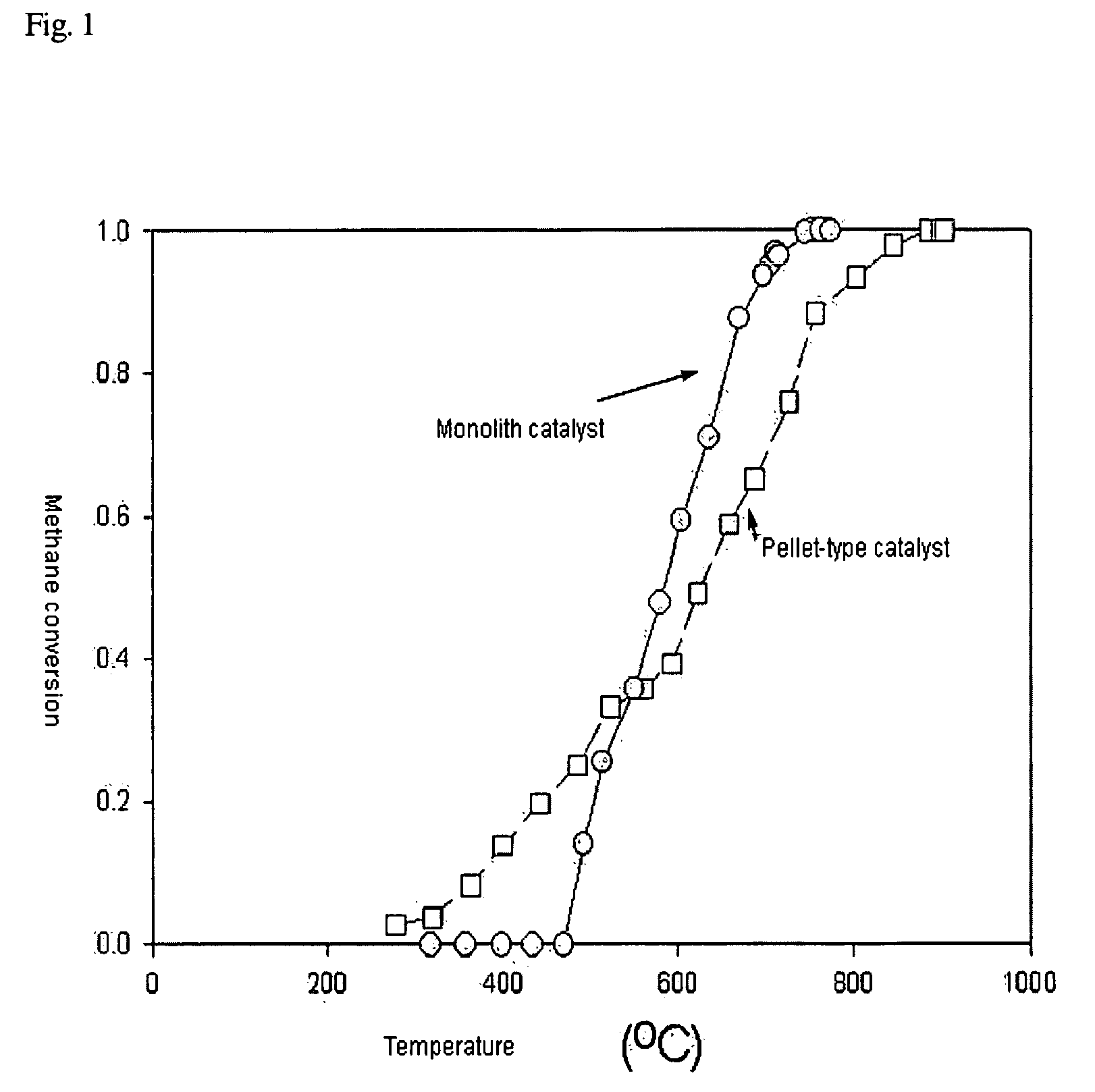Compact steam reformer with metal monolith catalyst and method of producing hydrogen using the same
- Summary
- Abstract
- Description
- Claims
- Application Information
AI Technical Summary
Benefits of technology
Problems solved by technology
Method used
Image
Examples
example 1
[0034] The inventive catalyst is in a form where a washcoat of nickel-based catalyst is applied on the wall side of a metal monolith. The metal monolith used in this Example was prepared using an iron-chrornium-aluminum alloy (Fecralloy) plate, and the density of cells in the metal monolith was 640 cells / in2. The prepared metal monolith was preoxidized so as to increase the adhesion between a ceramic-based washcoat material and a metal-based monolith. A catalyst (containing 10% nickel and the balance of alumina and other alkaline compounds) used in a commercial steam reforming process was finely powdered and mixed with water to prepare slurry. To the slurry, a suitable amount of nitric acid was added. The metal monolith was coated by immersion in the slurry, and then sintered at 900° C., thus preparing a metal monolith catalyst having a washcoat with the nickel-based catalyst applied thereto. The washcoat amount of the catalyst prepared in this Example was 0.22 g per cc of the monol...
PUM
| Property | Measurement | Unit |
|---|---|---|
| Density | aaaaa | aaaaa |
| Substance count | aaaaa | aaaaa |
| Frequency | aaaaa | aaaaa |
Abstract
Description
Claims
Application Information
 Login to View More
Login to View More - R&D
- Intellectual Property
- Life Sciences
- Materials
- Tech Scout
- Unparalleled Data Quality
- Higher Quality Content
- 60% Fewer Hallucinations
Browse by: Latest US Patents, China's latest patents, Technical Efficacy Thesaurus, Application Domain, Technology Topic, Popular Technical Reports.
© 2025 PatSnap. All rights reserved.Legal|Privacy policy|Modern Slavery Act Transparency Statement|Sitemap|About US| Contact US: help@patsnap.com


